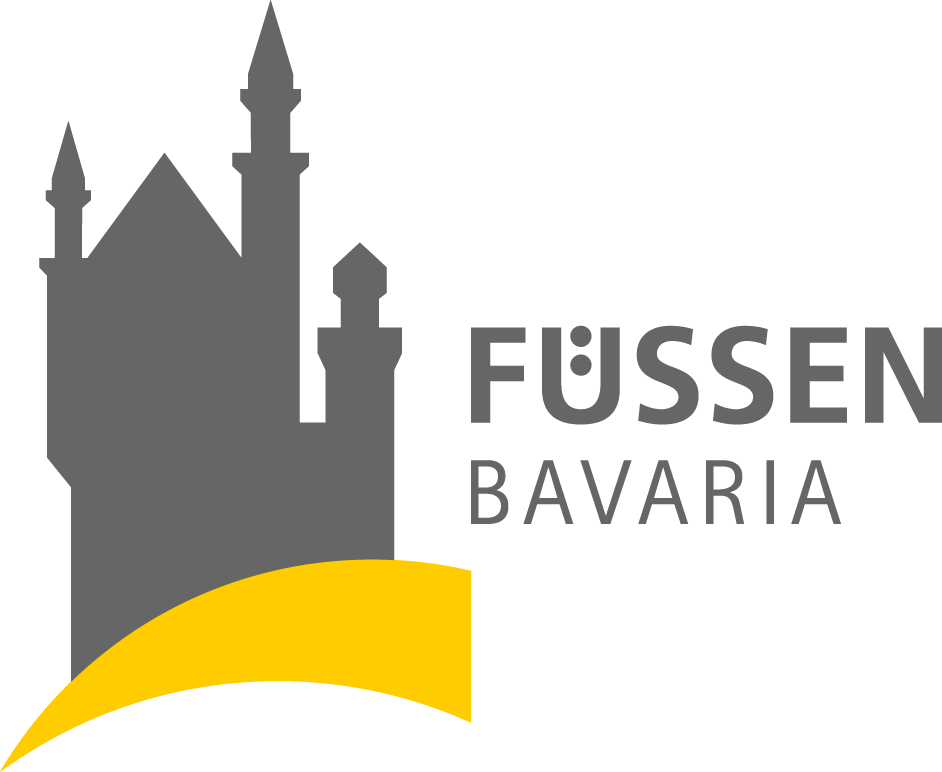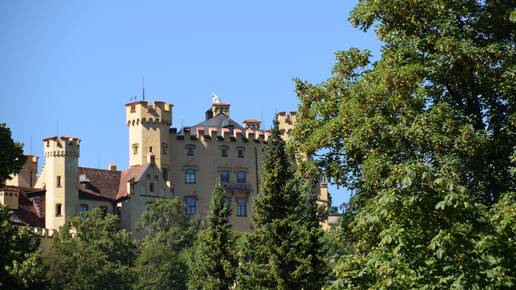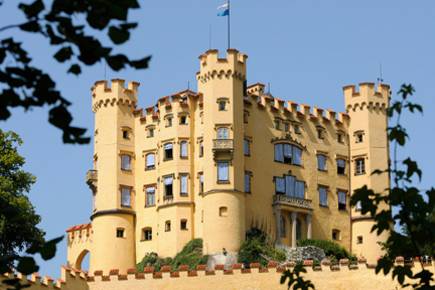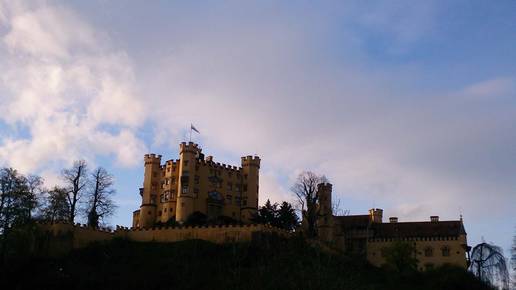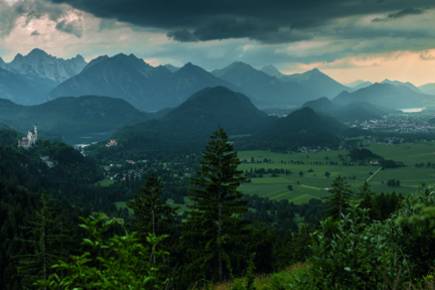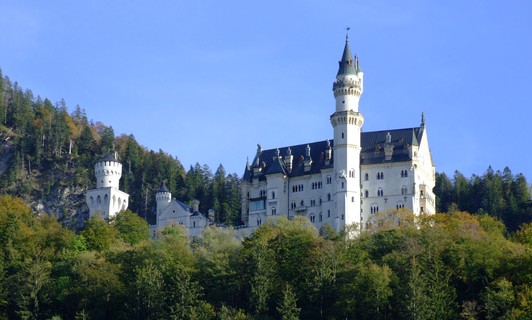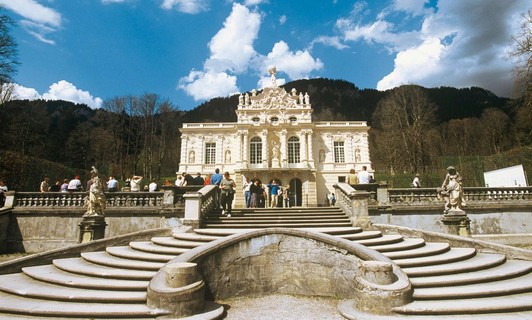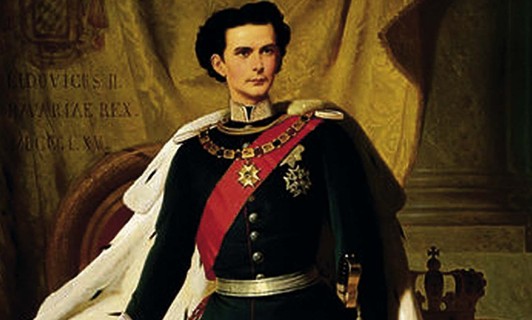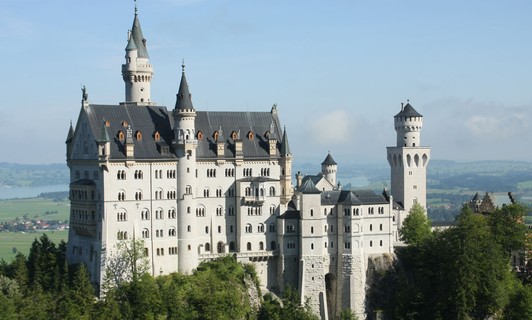- You are here:
- Füssen (english)
- King Ludwig's Castles
- Hohenschwangau Castle
Hohenschwangau Castle
Less famous, but not less worth seeing, is Hohenschwangau Castle. In particular, the original 19th century Biedermeier furnishings and the Swan Lake Park make it a hot tip for any journey.
The ancient Schwangau castle of “Schwanstein”, which was already dilapidated and uninhabitable when the Schwangau aristocracy died out, was purchased in 1535 by the patrician and Imperial Counselor Johann von Paumgartner zu Paumgarten and completely rebuilt from 1538 to 1547. He gave it the new name “Hohenschwangau”. Almost 300 years later the Paumgarten building was again in ruins. In 1839 the Bavarian Crown Prince Max, the son of Ludwig I, came to the district of Füssen on the occasion of a “history excursion” with his teacher and acquired this crumbling building.
He had it rebuilt according to ancient extant plans by the architecture and theater painter Domenico Quaglio, who, although he originally came from the area of Lake Como, had long since settled in Munich. The whole complex lives in the spirit of the romantic era. Such names as the Swan Knight’s Hall, Guelph Room and Hohenstaufen Room are indications of a living attachment to sagas and history. The Castle Courtyard, whose finest ornamentation is the Mary Fountain, is immediately adjacent to the Castle Garden, which is enclosed by a castellated outer wall. In the center of a circular flowerbed is a pool with a water-spouting swan.
- The castle can only be visited by a guided tour. All information can be found at the Ticket Center Hohenschwangau.
- From the Ticket Center you can reach the castle only by walking or horse carriage.
